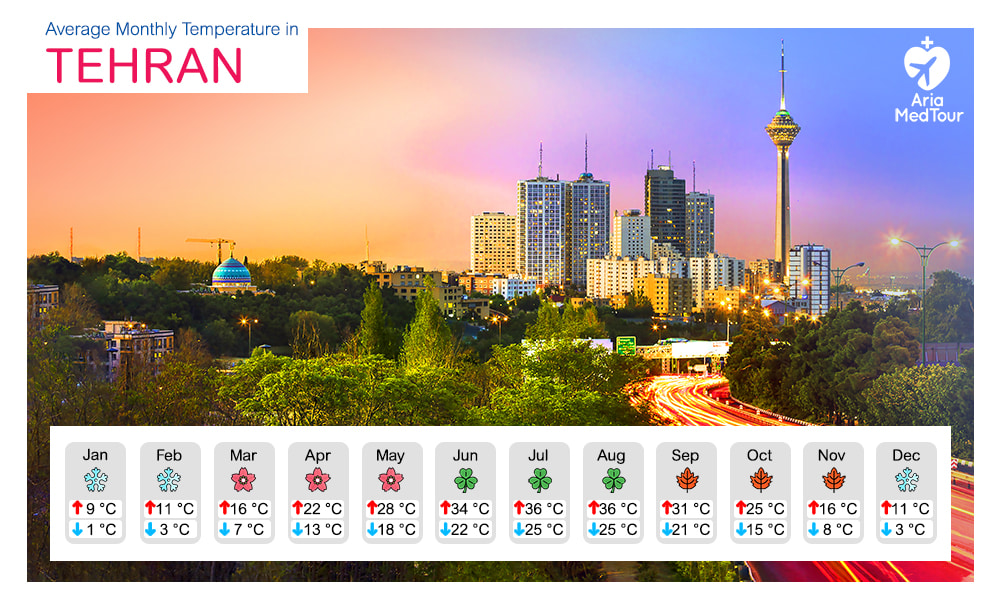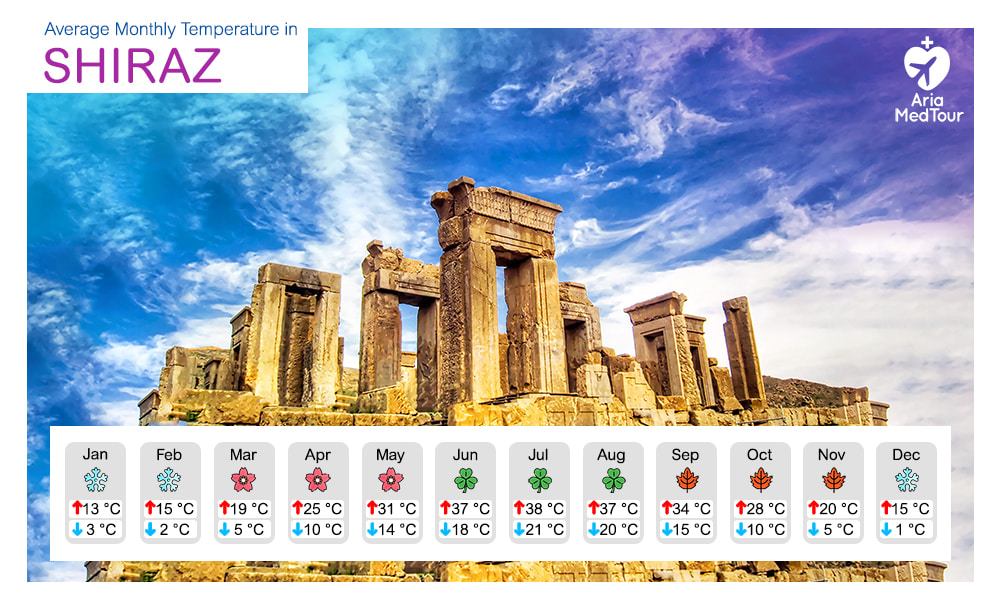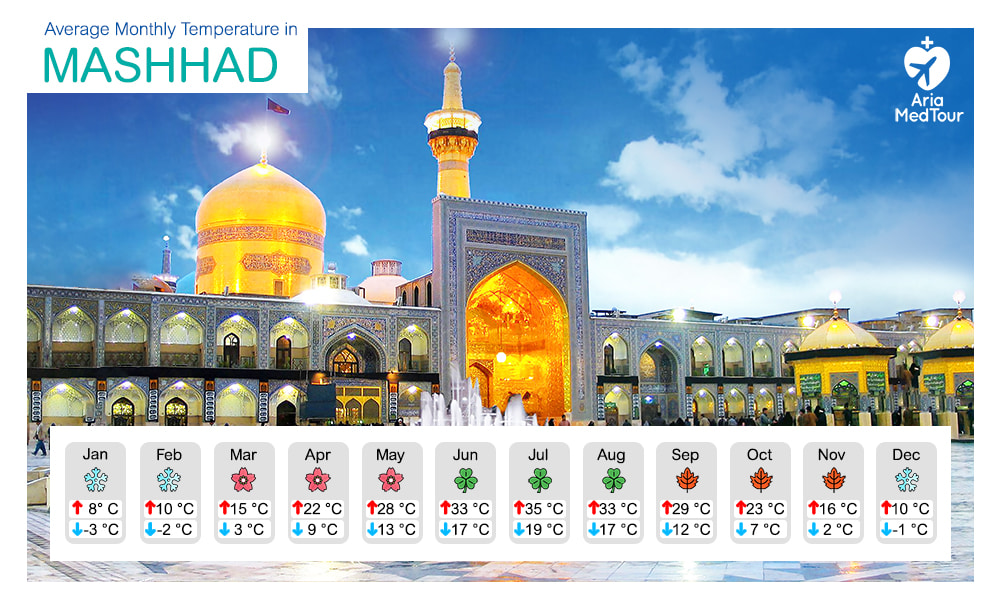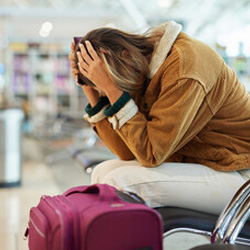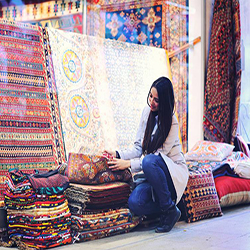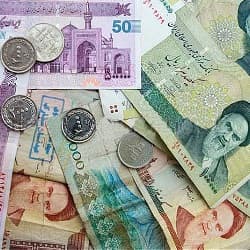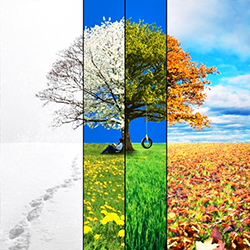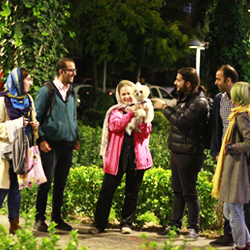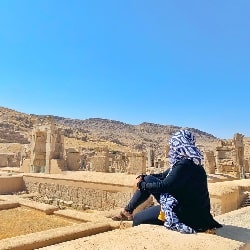If you are visiting Iran to pursue medical treatment in the country, you do not want to be dumbfounded wearing the wrong outfit. In this article, you will learn about the climate of Iran’s major touristic cities, the weather conditions during different days of the year as well as tips on what to wear.
The average weather in Iran’s major cities
Tehran
Resting on the slopes of Alborz Mountains, Tehran enjoys a delightful climate in general. Throughout the year, Tehran has minimal humidity, sunny days and plenty of rainy days as well as snowy ones every once in a while. Hopefully, the diverse range of weather can be predicted if you know when you will arrive in Tehran.
Spring is the time of year when you can enjoy being outdoors all day long. The temperature during spring is 20 to 25 °C, making the weather extremely agreeable. If you are traveling to Tehran in spring, pack a light hooded sweatshirt in case it gets rainy and chilly in March. During April and May, the weather is mostly pleasant and not too cold nor too hot. Yet, you can bring an umbrella just to be on the safe side.
During summer, it might get too hot (about 38 °C) to get around in the daytime. At its summer nights, however, Tehran yields delightful weather that forces people to stay awake and enjoy the nightlife. Wear sandals and loose cotton fabrics to be at ease during the day.
Fall is unsurprisingly a wet season in Tehran. It is crucial to pack a raincoat, rain boots, umbrella, and basically, anything that keeps you dry in the rain. Make sure to bring light jacket and wool sweater as well as long sleeve shirts. Layer different items so that you can remove the extra layers when it gets warmer.
Don’t let the stereotype about how Iran is all desert fool you. During winter, Tehran can get as cold as -5 °C. Icy streets and heavy snow happen very rarely in Tehran. Yet, you might want to be prepared by bringing a pair of snow boots. Pack a winter coat, plenty of wool sweaters, a scarf, and a pair of warm gloves. If you are from a cold country like Finland, Canada or Russia, Tehran’s winter might be a joke to you. Nevertheless, bring those extra layers to stay warm and dry.
The average high and low temperature in Tehran
Read more: All you need to know about Tehran
Shiraz
Shiraz can get very hot from June to August, making walking in the city really exhausting during the daytime. The diurnal temperature range, however, is relatively high; meaning the city experiences a significant drop in temperature at night. During the summer, most people spend their nights outdoors to make the most of those numbered hours of cool temperature, hence the famous Shiraz nights.
You can wear cotton fabrics that are thin and breathable. Ladies can also wear long summer dresses that cover their ankles. This way you won’t get hot and yet maintain a stylish as well as modest look.
Note: As a woman, it might be tricky to wear clothes that are comfortable yet are in line with the dress code. Try giving the dress code in Iran a read to get a grasp of Iran’s dos and don’ts in terms of clothing.
Shiraz rarely experiences below-zero temperature let alone the elements. Therefore, winter days are rarely intolerably cold. Yet, packing a fine leather coat, wool sweatshirts, and a warm scarf can be a wise decision.
The average high and low temperature in Shiraz
Read more: A Complete Shiraz Travel Guide
Mashhad
Located in the northeast of Iran, Mashhad has a cold and dry climate on most days. Winters are often cold with an average low temperature of -2 °C.
Summer days are cooler than those in Tehran or Shiraz. Yet, they could get quite uncomfortable if you wear the wrong outfit. Stick to breathable fabrics, loose clothing, and sandals. Also, wear plenty of sunscreen.
Out of the three mentioned cities, Mashhad has the coldest winters. Be ready to wear layers of wool, quality snow boots, and a thick winter coat. It is necessary to keep yourself warm outdoors. However, as Mashhad hotels are some of the finest in the country, you can rest assured that you won’t feel cold indoors.
The average high and low temperature in Mashhad
Read more: All you need to know about Mashhad
The weather in Iran all year round
One of the questions we get asked a lot by our patients is “When is the best time to have my procedure?” The truth is you can visit Iran and undergo a medical procedure all year round. Yet, considering some details about the various weather conditions can help you have an even easier journey.
March 21 to June 21
During the first three months of the Iranian year (the spring), the weather is relatively warmer and Nowruz (Persian New Year) vibe can be felt everywhere.
In the early spring, you should wear warm clothing that can withstand the cool breeze and is also comfortable for indoors where it gets warmer. You can wear a flannel shirt and top it with a trench coat that you can take off or put on as needed. March is the wettest month of the year. So, make sure to bring an umbrella and a quality raincoat too.
April is a wonderful month of the year anywhere around the world, and Iran is no exception. The average temperature in April is between 22 °C/ 71 °F and 25 °C/77 °F in Tehran, Shiraz, and Mashhad.
During April, most cities are warm enough for you to wear something that is not too thin nor too thick and you will be good. This means that you can wear a denim coat on a T-shirt and be ready to head outside in the majority of cities.
With June approaching, you should expect hotter days and shorter nights. If you are visiting Iran in this month of the year, you should go for thinner fabrics and loose clothes. Wearing sunscreen gets crucial as well, especially for people with fair complexion.
Quick tip:
- Layer up during March and April as the weather can get unpredictable and the wind blows without warning. This way, you can slip things on and off as the temperature changes.
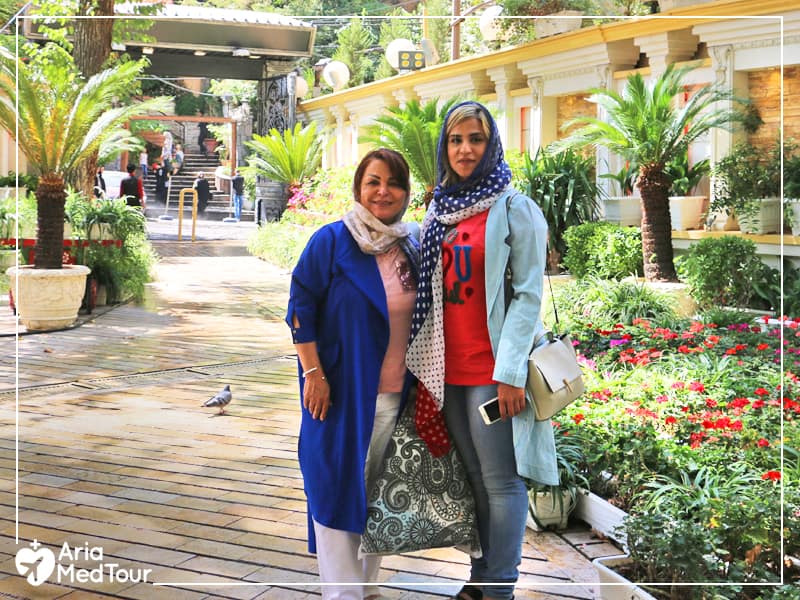
A normal day in Iran during spring
June 22 to September 22
During summer, cities like Shiraz can get as hot as 42 °C. Summertime can offer an excellent opportunity for foreign patients looking to undergo surgery in Iran as they can stay indoors where it is cool.
To be prepared for the hot summer days of Iran, be sure to pack clothes that are made of cotton or linen. Also, you should avoid polyester or nylon materials. If you’re visiting for medical purposes, make sure to pack loose-fitting clothing that is convenient during and after the procedure.
It goes without saying that you should use plenty of sunscreens and protect your eyes too by wearing shades as in this time of year, you will be exposed to too much sunshine.
Quick tips:
- Remember to stay hydrated.
- Use sunscreen, A LOT OF IT!
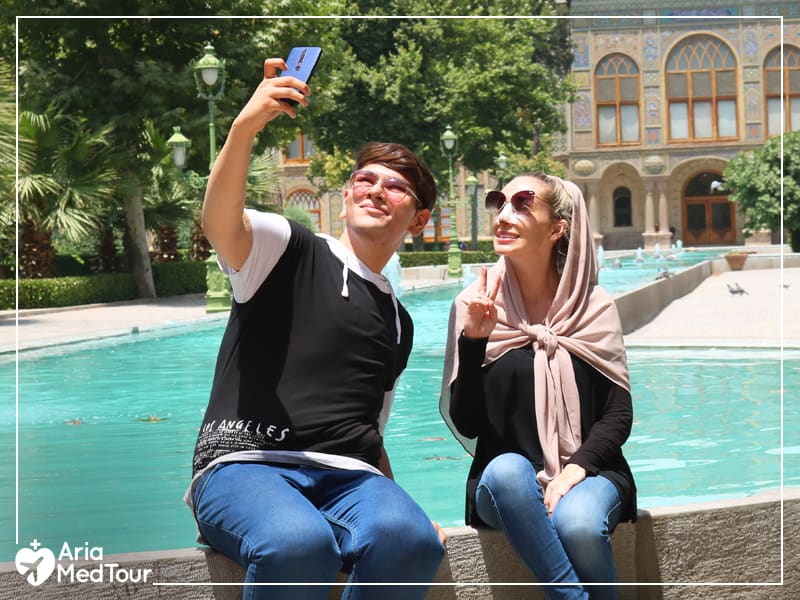
A normal day in Iran during summer
September 23 to November 22
Fall is the second most popular season for travelers to experience the perfect weather. In late September and early October, the temperature starts to drop. October and November are mostly pleasant during the daytime. However, nights could be a bit chilly, especially in cities like Mashhad.
Although packing winter coats or snow boots won’t be necessary, you should bring sweaters and raincoats as the temperature is usually below 25̊ C and the chance of rain is pretty high in this time of year. It might be too cold to wear sandals. So, bring a pair of sneakers as well as rain boots to keep your feet dry when it rains.
Quick tip:
- Increase your vitamin C intake to reduce the chances of catching a cold.
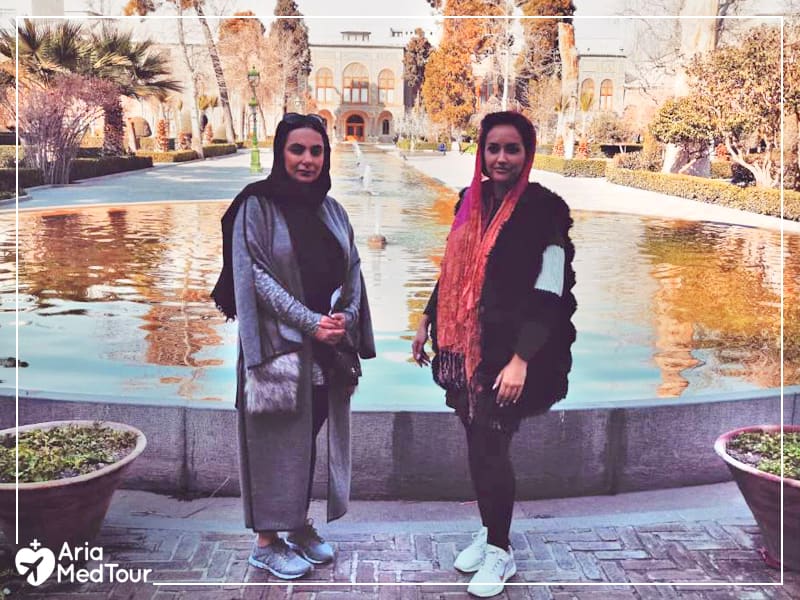
A normal day in Iran during fall
November 23 to March 20
This time of year marks the final season of the Iranian calendar and also the coldest time of year. Cold cities like Mashhad can get as cold as -6°C. December, January, and February are also the time of year when it snows, a lot. In fact, skiing is the go-to leisure pursuit for many Iranians during winter.
You need to pack warm clothing, including wool socks and knitted sweaters. Snow boots and a quality jacket are also necessary if you plan to spend time in the snowy regions.
December is the coldest month in most cities of Iran, but cities like Tehran or Shiraz will be warmer than many European cities like Paris or Amsterdam. So, you are unlikely to face icy streets and deep snow. If you want to undergo a medical procedure in Iran, the winter offers an excellent opportunity as the recovery will be quicker and easier in cold weather.
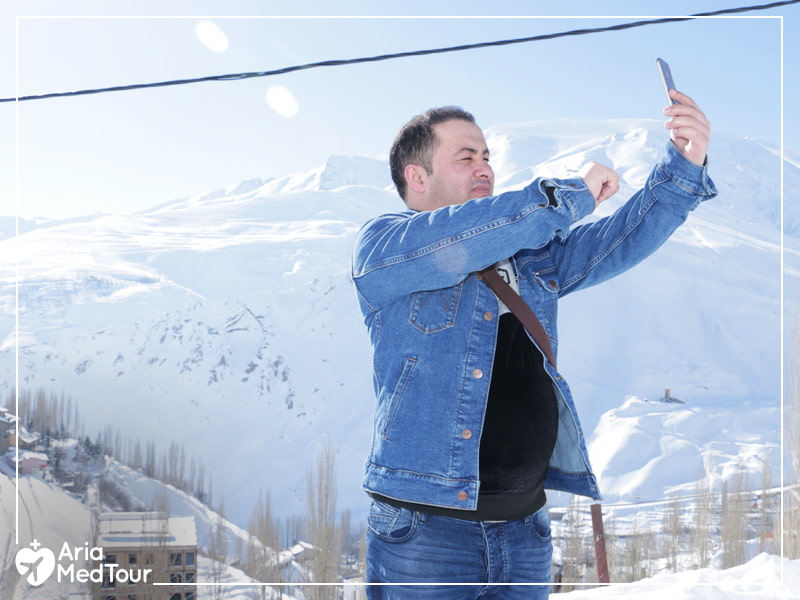
A normal day in Iran during winter
Your AriaMedTour coordinator will be in touch with you to answer any question that pops into your head regarding the trip. Here are some essentials you can ask to start the conversation:
- When is the best time to have my procedure in Iran?
- Based on my procedure, what are some essential items to pack in my suitcase?

